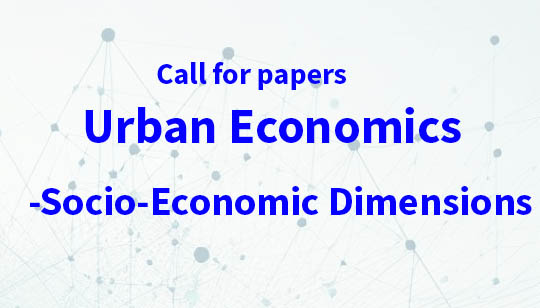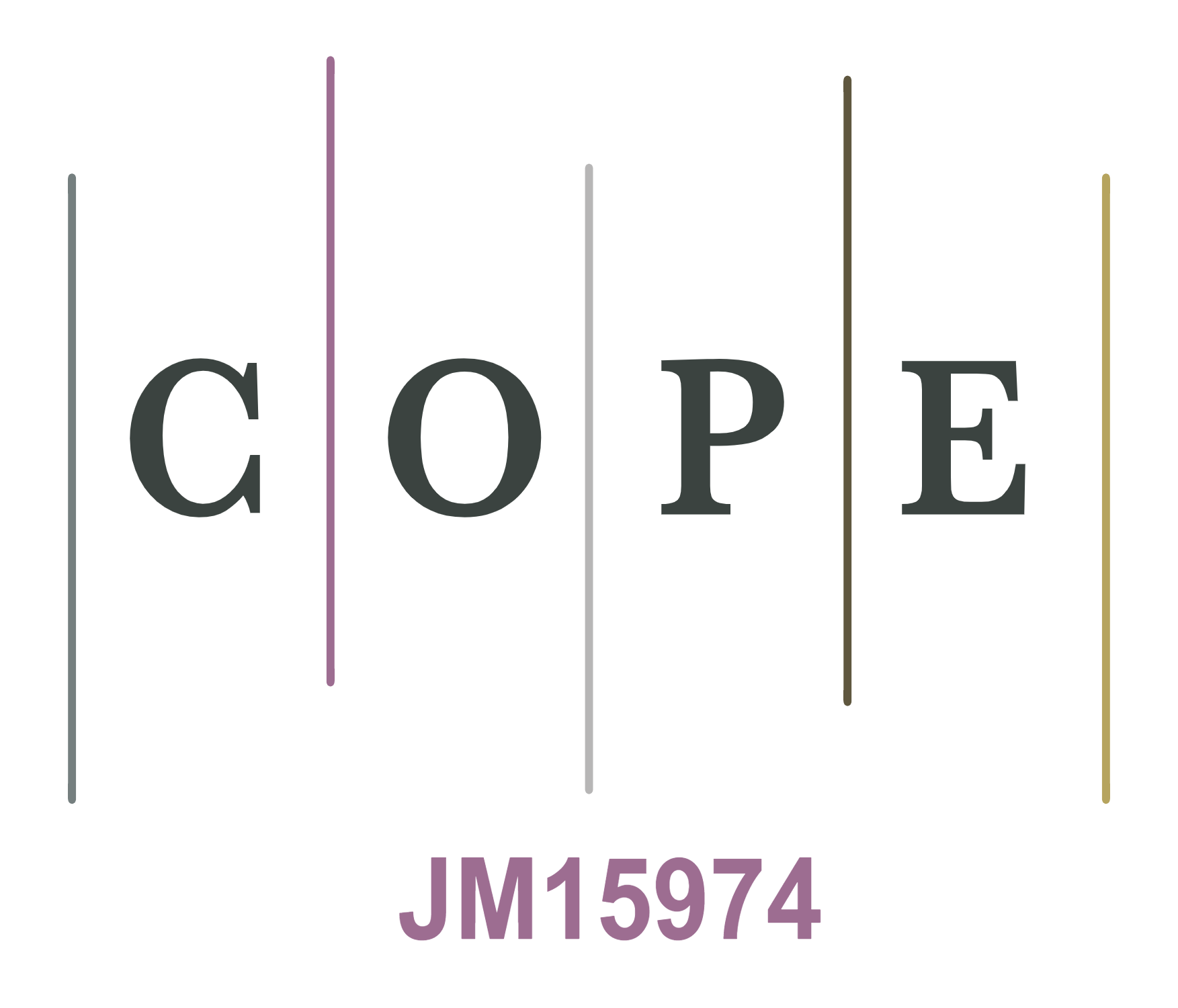The Dynamics of Heritagization in Urban Regeneration: East-West Dichotomy
DOI:
https://doi.org/10.25034/ijcua.2025.v9n1-9Keywords:
Heritagization, Urban Regeneration, East–West Dichotomy, urban planning tools and methods, Critical Heritage Studies, Cultural Politics, IdentityAbstract
Heritagization —the process of assigning heritage value to places, objects, or traditions— has become increasingly entwined with urban regeneration initiatives. However, its theoretical grounding remains underdeveloped, particularly regarding its diverse expressions across Eastern and Western contexts. This study examines the dynamics of heritagization as both a cultural and socio-political process within urban regeneration, drawing on the framework of Critical Heritage Studies. Using a descriptive qualitative methodology and global case-based literature review, the research dissects how heritage is strategically reinterpreted to fulfil contemporary socio-economic and political goals. Findings reveal a clear East–West dichotomy: while Western practices often commodify heritage for branding and tourism, Eastern cases reflect heritage as a tool for identity reconstruction, postcolonial resilience, and state-led regeneration. The study argues that heritagization should be understood not as a Western-centric imposition, but as a globally variable process shaped by local agency, historical context, and development agendas. To support this claim, the paper presents comparative process diagrams delineating regional differences. Ultimately, this research contributes to a more nuanced, decolonised understanding of heritagization in the built environment.
Downloads
References
AlShaikh, A. (2017). The value of authenticity in heritagization: An exploratory case study on Dubai Historical District (DHD) [Master’s thesis, Zayed University]. Zayed University Digital Projects.
AlShaikh, A. (2024). Shifting scenes of intangible cultural heritage in the United Arab Emirates: Working towards building a new heritage in the Arabian Gulf region [Doctoral dissertation, University of Birmingham]. UBIRA eTheses. https://etheses.bham.ac.uk/id/eprint/15312/
Angé, O., & Berliner, D. (2014). Introduction: Anthropology of nostalgia – Anthropology as nostalgia. In O. Angé & D. Berliner (Eds.), Anthropology and nostalgia (pp. 1–16). Berghahn Books. https://doi.org/10.1515/9781782384540-003 DOI: https://doi.org/10.1515/9781782384540-003
Anholt, S. (2005). Nation brand as context and reputation. Place Branding and Public Diplomacy, 1(3), 224–228. https://doi.org/10.1057/palgrave.pb.5990023 DOI: https://doi.org/10.1057/palgrave.pb.5990023
Arcilla, C. A. C. (2025). Overlooked subaltern urbanism in gentrification: Care work, depletions, and countermobilities in Philippine peri-urban resettlements. Urbanisation, 10(1), 29–46. https://doi.org/10.1177/24557471251341445 DOI: https://doi.org/10.1177/24557471251341445
Ashley, S. L. (2014). Re-telling, re-cognition, re-stitution: Sikh heritagization in Canada. Cultura, 11(2), 39–58. https://doi.org/10.5840/cultura201411214 DOI: https://doi.org/10.5840/cultura201411214
Ashworth, G. J. (2008). Grote Markt Groningen: The re-heritagization of the public realm. In B. Hayllar, T. Griffin, & D. Edwards (Eds.), City spaces – tourist places (pp. 261–274). Routledge. https://doi.org/10.1016/B978-0-7506-8195-7.00013-5 DOI: https://doi.org/10.1016/B978-0-7506-8195-7.00013-5
Awoke, A. (2010). The “heritagization” of Konso cultural landscape [Master’s thesis, London School of Economics and Political Science]. https://www.researchgate.net/publication/308550824 researchgate.net
Babelon, J., & Chastel, A. (1994). La notion du patrimoine / The concept of heritage. Liana Levi.
Bains, S. K. (2013). When old becomes new and the telling is re-told: Sikh stories within museum walls. In S. Knecht (Ed.), Diverse spaces: Identity, heritage, and community in Canadian public culture (pp. 170–187). Cambridge Scholars Publishing.
Baudrillard, J. (1981). Simulacre et simulation / Simulacrum and simulation. Galilée.
Becker, A. (2019). Dark tourism: The “heritagization” of sites of suffering, with an emphasis on memorials of the genocide perpetrated against the Tutsi of Rwanda. International Review of the Red Cross, 101(910), 317–331. https://doi.org/10.1017/S181638311900016X DOI: https://doi.org/10.1017/S181638311900016X
Boussaa, D. (2021). The past as a catalyst for cultural sustainability in historic cities: The case of Doha, Qatar. International Journal of Heritage Studies, 27(5), 470–486. https://doi.org/10.1080/13527258.2020.1806098 DOI: https://doi.org/10.1080/13527258.2020.1806098
Boussaa, D., & Madandola, M. (2024). Cultural heritage tourism and urban regeneration: The case of Fez Medina in Morocco. Frontiers of Architectural Research, 13(6), 1228–1248. https://doi.org/10.1016/j.foar.2024.04.008 DOI: https://doi.org/10.1016/j.foar.2024.04.008
Boussaa, D., Boudiaf, B., Awad, J., & Salameh, M. (2023). The resilient historic cities of Sharjah and Doha – Urban regeneration and the search for identity in a global world. Future Cities and Environment, 9(1), Article 17, 1–16. https://doi.org/10.5334/fce.199 DOI: https://doi.org/10.5334/fce.199
Bozoğlu, G., Campbell, G., Smith, L., & Whitehead, C. (Eds.). (2024). The Routledge international handbook of heritage and politics. Routledge. https://doi.org/10.4324/9781003300984 DOI: https://doi.org/10.4324/9781003300984
Colomer, L. (2017). Heritage on the move: Cross-cultural heritage as a response to globalisation, mobilities and multiple migrations. International Journal of Heritage Studies, 23(10), 913–927. https://doi.org/10.1080/13527258.2017.1347890 DOI: https://doi.org/10.1080/13527258.2017.1347890
Cronberg, A. A. (2009). Imagined nostalgia and false memories: Postmodernism and fashion in the late twentieth century. Vestoj, 1, 161–195. http://vestoj.com/postmodernism-and-fashion-in-the-late-twentieth-century/
Dang, T. K. (2021). Decolonising landscape. Landscape Research, 46(7), 1004–1016. https://doi.org/10.1080/01426397.2021.1935820 DOI: https://doi.org/10.1080/01426397.2021.1935820
Davallon, J. (2002). Comment se fabrique le patrimoine ? Sciences Humaines, (Special Issue No. 36), 74–77.
Gillot, L., Maffi, I., & Trémon, A.-C. (2013). “Heritage-scape” or “Heritage-scapes”? Critical considerations on a concept. Ethnologies, 35(2), 3–29. https://doi.org/10.7202/1026546ar DOI: https://doi.org/10.7202/1026546ar
Glasius, M. (2018). What authoritarianism is … and is not: A practice perspective. International Affairs, 94(3), 515–533. https://doi.org/10.1093/ia/iiy060 DOI: https://doi.org/10.1093/ia/iiy060
Graham, B., Ashworth, G., & Tunbridge, J. (2000). A geography of heritage. Routledge. https://doi.org/10.4324/9781315824895 DOI: https://doi.org/10.4324/9781315824895
Gravari-Barbas, M. (2018). Tourism as a heritage-producing machine. Tourism Management Perspectives, 25, 173–176. https://doi.org/10.1016/j.tmp.2018.01.004 DOI: https://doi.org/10.1016/j.tmp.2018.01.004
Gravari-Barbas, M. (2019). What makes Paris being Paris? Stereotypes, simulacra and tourism imaginaries. Journal of Tourism and Cultural Change, 17(1), 27–41. https://doi.org/10.1080/14766825.2019.1560765 DOI: https://doi.org/10.1080/14766825.2019.1560765
Gravari-Barbas, M. (2021). Tenements in New York and riads in Marrakesh. In M. Gravari-Barbas & S. Guinand (Eds.), Hybrid mobilities (pp. 15–36). Routledge. https://doi.org/10.4324/9781003023562-3 DOI: https://doi.org/10.4324/9781003023562-3
Gravari-Barbas, M., & Graburn, N. (2012). Imaginaires touristiques. Via Tourism Review, (1). https://doi.org/10.4000/viatourism.1180 DOI: https://doi.org/10.4000/viatourism.1178
Gravari-Barbas, M., Guinand, S., & Lu, Y. (2025). “Creative” uses of heritage in the age of experiential tourism: The case of Tianjin’s former international concessions. Journal of Chinese Architecture and Urbanism, 3(703). https://doi.org/10.36922/jcau.3703 DOI: https://doi.org/10.36922/jcau.3703
Hadjri, K., & Boussaa, D. (2007). Architectural and Urban Conservation in the United Arab Emirates. Open House International, 32(3), 16–26. https://doi.org/10.1108/OHI-03-2007-B0003 DOI: https://doi.org/10.1108/OHI-03-2007-B0003
Hague, C., & Jenkins, P. (Eds.). (2004). Place identity, participation and planning. Routledge. https://doi.org/10.4324/9780203646755 DOI: https://doi.org/10.4324/9780203646755
Hall, C. (2006). Implementing the World Heritage Convention: What happens after listing? In R. Harrison (Ed.), Managing World Heritage Sites (pp. 20–34). Butterworth-Heinemann. https://doi.org/10.1016/b978-0-7506-6546-9.50010-1 DOI: https://doi.org/10.1016/B978-0-7506-6546-9.50010-1
Hanif, S. (2024). Reclaiming the lost cultural identity via heritagization: The Gulf States [Master's thesis, Eastern Mediterranean University]. https://doi.org/10.13140/RG.2.2.36710.13122
Hanif, S., & Riza, M. (2024). Heritagization of Historic Sites: Transformation of Al Diriyah from a Ruin to a Branded Cultural Capital. ISVS E-Journal, 11(12), 29–48. https://doi.org/10.61275/ISVSej-2024-11-12-03 DOI: https://doi.org/10.61275/ISVSej-2024-11-12-03
Harrison, R. (2012). Forgetting to remember, remembering to forget: Late modern heritage practices, sustainability and the ‘crisis’ of accumulation of the past. International Journal of Heritage Studies, 19(6), 579–595. https://doi.org/10.1080/13527258.2012.678371 DOI: https://doi.org/10.1080/13527258.2012.678371
Harrison, R. (2013). Heritage. Routledge. https://doi.org/10.4324/9780203108857 DOI: https://doi.org/10.4324/9780203108857
Harvey, D. (2015). Heritage and scale: Settings, boundaries and relations. International Journal of Heritage Studies, 21(6), 577–593. https://doi.org/10.1080/13527258.2014.955812 DOI: https://doi.org/10.1080/13527258.2014.955812
Harvey, D. C. (2001). Heritage pasts and heritage presents: Temporality, meaning and the scope of heritage studies. International Journal of Heritage Studies, 7(4), 319–338. https://doi.org/10.1080/13581650120105534 DOI: https://doi.org/10.1080/13581650120105534
Indika, M. K. A. (2023). Heritagization of religious festivals and (re)invention of Buddhist heritage in modern Sri Lanka. Journal of History, Archaeology and Architecture, 2(2), 139–145. https://doi.org/10.13140/RG.2.2.20623.92327
James, M. (2012). 1 Neoliberal Heritage Redress. In S. K. Bains & S. L. Ashley (Eds.), Reconciling Canada (pp. 31–46). University of Toronto Press. https://doi.org/10.3138/9781442695467-003 DOI: https://doi.org/10.3138/9781442695467-003
Jeudy, H. P. (1994). Patrimoines en folies / Heritage gone wild. Éditions de la Maison des Sciences de l’Homme. https://books.openedition.org/editionsmsh/3764
Kajda, K. (2019). Heritage – public and expert discourse in the process of heritigization. Ex Novo: Journal of Archaeology, 4, 73–82. https://doi.org/10.32028/exnovo.v4i0.371 DOI: https://doi.org/10.32028/exnovo.v4i0.371
Kassem, A., Awad, J., & Eldanaf, T. (2024). From museumification to performativization: A performative approach to heritage reuse. Cases from the United Arab Emirates. Future Cities and Environment, 10(1), 1–14. https://doi.org/10.5334/fce.228 DOI: https://doi.org/10.5334/fce.228
Khetrapal, N. (2024). International and national heritagisation of religion in Asia. In The Palgrave Encyclopædia of Cultural Heritage and Conflict (pp. 1–4). Springer. https://doi.org/10.1007/978-3-030-61493-5_1-1 pure.jgu.edu.in DOI: https://doi.org/10.1007/978-3-030-61493-5_1-1
Kirchanov, M. (2004). The Reconstruction of Nations. Poland, Ukraine, Lithuania, Belarus, 1569–1999 by Timothy Snyder (review). Ab Imperio, 2004(4), 694–699. https://doi.org/10.1353/imp.2004.0089 DOI: https://doi.org/10.1353/imp.2004.0089
Kirshenblatt-Gimblett, B. (1995). Theorising heritage. Ethnomusicology, 39(3), 367–380. https://doi.org/10.2307/924627 DOI: https://doi.org/10.2307/924627
Kirshenblatt-Gimblett, B. (1998). Destination culture: Tourism, museums, and heritage. University of California Press. https://doi.org/10.1525/9780520919488 DOI: https://doi.org/10.1525/9780520919488
Kock, W. J. W. (2023). Loss in translation: The heritagisation of Catholic monasteries. Sidestone Press. https://doi.org/10.59641/wmt0fzno DOI: https://doi.org/10.59641/wmt0fzno
Labadi, S., & Long, C. (Eds.). (2010). Heritage and globalisation. Routledge. https://doi.org/10.4324/9780203850855 DOI: https://doi.org/10.4324/9780203850855
Le Mentec, K., & Zhang, Q. (2017). Heritagisation of disaster ruins and ethnic culture in China: Recovery plans after the 2008 Wenchuan earthquake. China Information, 31(3), 349–370. https://doi.org/10.1177/0920203X17736508 DOI: https://doi.org/10.1177/0920203X17736508
Lee, H. K. (2021). Beyond “imagined” nostalgia: Gunsan's heritagisation of Japanese colonial architecture in South Korea. International Journal of Asian Studies, 20(1), 1–23. https://doi.org/10.1017/S1479591421000243 DOI: https://doi.org/10.1017/S1479591421000243
Lees, L., Slater, T., & Wyly, E. (2008). Gentrification. Routledge. https://doi.org/10.4324/9780203940877 DOI: https://doi.org/10.4324/9780203940877
Low, K. E. Y. (2017). Concrete memories and sensory pasts: Everyday heritage and the politics of nationhood. Pacific Affairs, 90(2), 275–295. https://doi.org/10.5509/2017902275 DOI: https://doi.org/10.5509/2017902275
Lukowski, J., & Zawadzki, H. (2001). A concise history of Poland. Cambridge University Press. https://doi.org/10.1017/CBO9780511813856 DOI: https://doi.org/10.1017/CBO9780511813856
Macdonald, S. (2013). Memorylands: Heritage and identity in Europe today. Routledge. https://doi.org/10.4324/9780203553336 DOI: https://doi.org/10.4324/9780203553336
Mai Le, Q. (2021). Tales of heritagisation: Networks, flows and community involvement at World Heritage sites in Vietnam (Doctoral thesis, Rheinische Friedrich-Wilhelms-Universität Bonn). https://nbn-resolving.org/urn:nbn:de:hbz:5-64776
Margry, P. J. (2011). Memorialising a controversial politician: The “heritagisation” of a materialised vox populi. In P. J. Margry & C. Sánchez-Carretero (Eds.), Grassroots memorials: The politics of memorialising traumatic death (pp. 319–345). Berghahn. https://doi.org/10.1515/9780857451903-017 DOI: https://doi.org/10.1515/9780857451903-017
Mascaro, G. (2024). Heritagisation as an authoritarian urban practice in China: Insights from Lijiang. International Journal of Urban and Regional Research, 48(4), 708–720. https://doi.org/10.1111/1468-2427.13238 DOI: https://doi.org/10.1111/1468-2427.13238
Masri, S., Karajica, L., & Dayaratne, R. (2024). Problems and potentials of promoting vernacular heritage to regain cultural identity of historic cities: Insights from Bahrain. ISVS e-Journal, 11(12), 49–64. https://doi.org/10.61275/ISVSej-2024-11-12-04 DOI: https://doi.org/10.61275/ISVSej-2024-11-12-04
Mazzetto, S., & Vanini, F. (2023). Urban heritage in Saudi Arabia: Comparison and assessment of sustainable reuses. Sustainability, 15(12), Article 9819. https://doi.org/10.3390/su15129819 DOI: https://doi.org/10.3390/su15129819
Meskell, L. (Ed.). (2015). Global heritage: A reader. Wiley-Blackwell. https://doi.org/10.1002/9781394261154 DOI: https://doi.org/10.1002/9781394261154
Milošević, A. (2018). Historicising the present: Brussels attacks and heritagisation of spontaneous memorials. International Journal of Heritage Studies, 24(1), 53–65. https://doi.org/10.1080/13527258.2017.1362574 DOI: https://doi.org/10.1080/13527258.2017.1362574
Møller-Olsen, A. (2021). The city is a journey: Heritage and memory in Zhu Tianxin’s novella The Old Capital. International Journal of Heritage Studies, 27(8), 819–829. https://doi.org/10.1080/13527258.2020.1731839 DOI: https://doi.org/10.1080/13527258.2020.1731839
Moufid, O., Praharaj, S., Jarar Oulidi, H., & Momayiz, K. (2025). A digital twin platform for the cocreation of urban regeneration projects: A case study in Morocco. Habitat International, 161, Article 103427. https://doi.org/10.1016/j.habitatint.2025.103427 DOI: https://doi.org/10.1016/j.habitatint.2025.103427
Muñoz-Viñas, S. (2005). Contemporary theory of conservation. Routledge. https://doi.org/10.4324/9780080476834 DOI: https://doi.org/10.4324/9780080476834
Murzyn-Kupisz, M. (2012). Dziedzictwo kulturowe a rozwój lokalny / Cultural heritage and local development. Uniwersytet Ekonomiczny w Krakowie / Krakow University of Economics. Seria Specjalna, Monografie, (221). https://ochronazabytkow.nid.pl/wp-content/uploads/2019/08/OZ_2-2016_12_Koziol.pdf
Muzaini, H., & Minca, C. (Eds.). (2018). After heritage. Edward Elgar Publishing. https://doi.org/10.4337/9781788110747 DOI: https://doi.org/10.4337/9781788110747
Obeng-Odoom, F. (2024). Oil cities, industrial policy and sustainable development: A new historical approach. Environment & Urbanization, 36(2), 478–486. https://doi.org/10.1177/09562478241277082 DOI: https://doi.org/10.1177/09562478241277082
Park, J.-K., Tae, H.-S., Ok, G., & Kwon, S.-Y. (2018). The heritagization and institutionalization of Taekkyeon: An intangible cultural heritage. The International Journal of the History of Sport, 35(15–16), 1555–1566. https://doi.org/10.1080/09523367.2019.1620734 DOI: https://doi.org/10.1080/09523367.2019.1620734
Park, S., & Kang, M. (2025). Research on institutional frameworks for historic preservation through sustainable management and adaptive reuse: A comparative study in Philadelphia and Seoul. International Journal of Urban Sciences, 29(1), 175–194. https://doi.org/10.1080/12265934.2024.2445245 DOI: https://doi.org/10.1080/12265934.2024.2445245
Picard, D., & Leite, N. (2022, July). P096: Urban revitalization through heritagization: Collaboration, resistance and the right to the city. Paper presented at EASA2016: Anthropological legacies and human futures, University of Milano-Bicocca. https://nomadit.co.uk/conference/easa2016/p/4049
Poria, Y. (2010). The story behind the picture: Preferences for the visual display at heritage sites. In E. Waterton & S. Watson (Eds.), Culture, heritage and representation: Perspectives on visuality and the past (pp. 235–246). Ashgate. https://doi.org/10.4324/9781315258683-26 DOI: https://doi.org/10.4324/9781315258683-26
Poulot, D. (Ed.). (1998). Patrimoine et modernité / Heritage and modernity. L’Harmattan.
Preucel, R. W. (1993). The Representation of the Past: Museums and Heritage in the Post-Modern World. Journal of Anthropological Research, 49(4), 406–409. https://doi.org/10.1086/jar.49.4.3630161 DOI: https://doi.org/10.1086/jar.49.4.3630161
Rautenberg, M. (2003). La rupture patrimoniale / Disruption of heritage. A la croisée.
Salemink, O. (2021). Introduction: Heritagizing Asian cities: Space, memory, and vernacular heritage practices. International Journal of Heritage Studies, 27(8), 769–776. https://doi.org/10.1080/13527258.2021.1890186 DOI: https://doi.org/10.1080/13527258.2021.1890186
Sánchez-Carretero, C. (2013). Significance and social value of cultural heritage: Analyzing the fractures of heritage. In C. Sánchez-Carretero & J. M. Macarulla (Eds.), Science and technology for the conservation of cultural heritage. CRC Press. https://doi.org/10.1201/b15577 DOI: https://doi.org/10.1201/b15577
Silva, L. (2011). Folk architecture heritagization in rural Portugal. In F. X. Hernández i Hernández (Ed.), Constructing cultural and natural heritage: Parks, museums and rural heritage (pp. 121–131). Institut Català de Recerca en Patrimoni Cultural.
Sjöholm, J. (2016). Heritagisation, re-heritagisation and de-heritagisation of built environments: The urban transformation of Kiruna, Sweden [Doctoral thesis, Luleå University of Technology]. DiVA Portal. https://www.diva-portal.org/smash/get/diva2:999224/FULLTEXT01.pdf
Smith, L. (2006). Uses of heritage. Routledge. https://doi.org/10.4324/9780203602263 DOI: https://doi.org/10.4324/9780203602263
Smith, L. (2007). Empty Gestures? Heritage and the Politics of Recognition. In D. J. H. de Haan (Ed.), Cultural heritage and human rights (pp. 159–171). Brill Nijhoff. https://doi.org/10.1007/978-0-387-71313-7_9 DOI: https://doi.org/10.1007/978-0-387-71313-7_9
Stephenson, M. L. (2013). Tourism, development and ‘destination Dubai’: Cultural dilemmas and future challenges. Current Issues in Tourism, 17(8), 723–738. https://doi.org/10.1080/13683500.2012.754411 DOI: https://doi.org/10.1080/13683500.2012.754411
Su, X., Song, C., & Sigley, G. (2019). The uses of reconstructing heritage in China: Tourism, heritage authorization, and spatial transformation of the Shaolin Temple. Sustainability, 11(2), 411. https://doi.org/10.3390/su11020411 DOI: https://doi.org/10.3390/su11020411
Sucharitkul, S. (1987). Évolution continue d’une notion nouvelle: Le patrimoine commun de l’humanité / Continuing evolution of a new concept: The common heritage of mankind (Publications No. 545). Golden Gate University School of Law.
Suwaidi, M. A., & Boussaa, D. (2024). Balancing globalization and heritage conservation in Gulf cities: Case studies from Doha and Jeddah. Future Cities and Environment, 10(1), 1–20. https://doi.org/10.5334/fce.260 DOI: https://doi.org/10.5334/fce.260
Svensson, M. (2021). Walking in the historic neighbourhoods of Beijing: Walking as an embodied encounter with heritage and urban developments. International Journal of Heritage Studies, 27(8), 792–805. https://doi.org/10.1080/13527258.2020.1821240 DOI: https://doi.org/10.1080/13527258.2020.1821240
Thouki, A. (2022). Heritagization of religious sites: In search of visitor agency and the dialectics underlying heritage planning assemblages. International Journal of Heritage Studies, 28(9), 1036–1065. https://doi.org/10.1080/13527258.2022.2122535 DOI: https://doi.org/10.1080/13527258.2022.2122535
Tornatore, J. L. (2006). Les formes d’engagement dans l’activité patrimoniale / Forms of engagement in heritage activity: De quelques manières de s’accommoder au passé. Questions de Communication, 3, 515–538. https://shs.hal.science/halshs-00122998v1
Türeli, I. (2014). Heritagisation of the ‘Ottoman/Turkish House’ in the 1970s: Istanbul-based actors, associations and their networks. European Journal of Turkish Studies, (19). https://doi.org/10.4000/ejts.5008 DOI: https://doi.org/10.4000/ejts.5008
Van De Kamp, L. (2019). The heritagization of post-industrial re-development and social inclusion in Amsterdam. Journal of Urban Cultural Studies, 6(2), 199–218. https://doi.org/10.1386/jucs_00010_1 DOI: https://doi.org/10.1386/jucs_00010_1
Walsh, K. (1992). The representation of the past: Museums and heritage in the post-modern world. Routledge. https://doi.org/10.4324/9780203320570 DOI: https://doi.org/10.4324/9780203320570
Winter, T. (2013). Heritage studies and the privileging of theory. International Journal of Heritage Studies, 20(5), 556–572. https://doi.org/10.1080/13527258.2013.798671 DOI: https://doi.org/10.1080/13527258.2013.798671
Wise, N., & Jimura, T. (2020). Changing spaces in historical places. In N. Wise & T. Jimura (Eds.), Tourism, cultural heritage and urban regeneration (pp. 1–19). Springer. https://doi.org/10.1007/978-3-030-41905-9_1 DOI: https://doi.org/10.1007/978-3-030-41905-9_1
Wolff, B. (2021). Restoring the glory of Serampore: Colonial heritage, popular history and identity during rapid urban development in West Bengal. International Journal of Heritage Studies, 27(8), 777–791. https://doi.org/10.1080/13527258.2020.1824163 DOI: https://doi.org/10.1080/13527258.2020.1824163
Xiao, Y. (2025). Heritagization of the Colonial Period in Dalian. In E. Avrami, A. S. Mason, & R. F. S. Jones (Eds.), The Palgrave encyclopedia of cultural heritage and conflict (pp. 1–14). Palgrave Macmillan. https://doi.org/10.1007/978-3-030-61493-5_123-1 DOI: https://doi.org/10.1007/978-3-030-61493-5_123-1
Xue, E. Y. (2022). Tourism as creative destruction: place making and resilience in rural areas. Journal of Tourism and Cultural Change, 20(6), 827–841. https://doi.org/10.1080/14766825.2022.2114359 DOI: https://doi.org/10.1080/14766825.2022.2114359
Yi, C., & Ryu, J. (2015). Growth, decline and the challenges facing a policy-dependent and former-colonial city: Gunsan, Korea. Cities, 43, 37–47. https://doi.org/10.1016/j.cities.2014.11.007 DOI: https://doi.org/10.1016/j.cities.2014.11.007
Yue, L., Gravari-Barbas, M., & Sandra, G. (2019). Simulacra heritagization: The Minyuan stadium in Wudadao, Tianjin. Journal of Tourism and Cultural Change, 17(1), 55–68. https://doi.org/10.1080/14766825.2019.1560910 DOI: https://doi.org/10.1080/14766825.2019.1560910
Zamoyski, A. (1993). The Polish way: A thousand-year history of the Poles and their culture. Hippocrene Books.
Zhu, Y., & Maags, C. (2020). Heritage politics in China. Routledge. https://doi.org/10.4324/9780429446429 DOI: https://doi.org/10.4324/9780429446429
Published
Issue
Section
License
Copyright (c) 2025 Saad Hanif, Müge Riza

This work is licensed under a Creative Commons Attribution 4.0 International License.






















